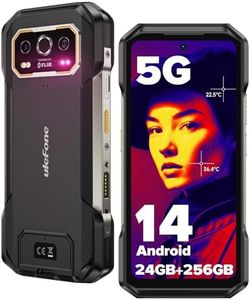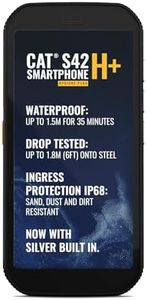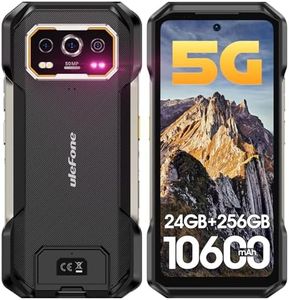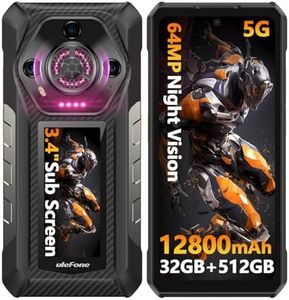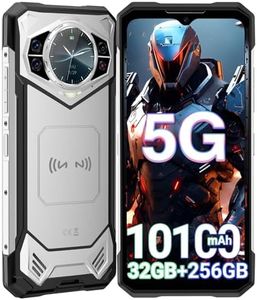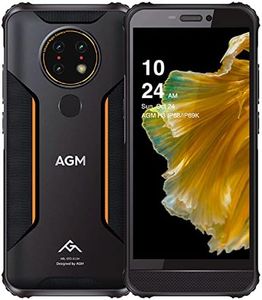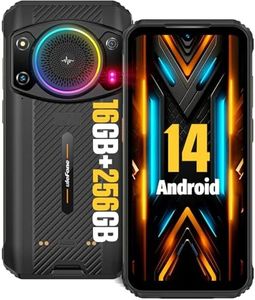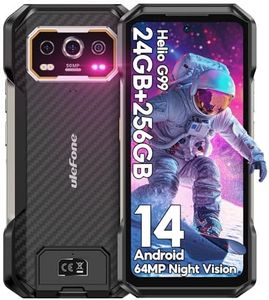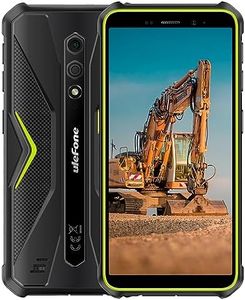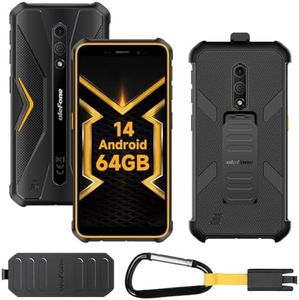We Use CookiesWe use cookies to enhance the security, performance,
functionality and for analytical and promotional activities. By continuing to browse this site you
are agreeing to our privacy policy
10 Best Tough Phones
From leading brands and best sellers available on the web.Buying Guide for the Best Tough Phones
When choosing a tough phone, your main goal is to find a device that can withstand harsh conditions and daily wear and tear, while still meeting your communication and feature needs. Start by identifying how and where you plan to use the phone — for example, on construction sites, during outdoor adventures, or in heavy-duty work environments. Think about the situations where a regular smartphone might break or fail, and use those scenarios to guide your decision making. Consider the key features that matter most for your daily life or job, and look for a phone that balances rugged protection with enough performance for your needs.Rugged Certification (IP Rating/MIL-STD)Rugged certification tells you how durable the phone is in tough environments. An IP (Ingress Protection) rating shows how well the phone is sealed against dust and water, with higher numbers meaning better protection. IP67 means the phone is dust tight and handles brief immersion in water, while IP68 can usually handle deeper or longer water exposure. MIL-STD refers to military-standard testing, which can include drop, shock, temperature, and vibration resistance. If you work in very wet, dusty, or rough locations, aim for the highest IP and a MIL-STD rating. For everyday use with occasional bumps, a lower rating could still provide peace of mind. Choose the level that matches your exposure to the elements and risks.
Battery Life and CapacityBattery life refers to how long your phone can operate before needing a recharge. In tough phones, a larger battery is important because you might not have easy access to power in the field. Battery capacity is measured in milliamp-hours (mAh); higher numbers mean more usage time. Some phones also offer quick or wireless charging. If you spend long hours away from power or need your phone for emergencies, choose a model with a larger battery (over 5000 mAh is common for rugged models). If your work is mostly indoors or you charge often, you might not need the biggest battery.
Screen Protection and SizeTough phones use screens made from hardened glass, like Gorilla Glass, to resist scratches and cracks. Screen size affects how easy it is to see and use the phone. Smaller screens (around 5 inches) make the phone more portable and sometimes tougher, while larger screens (over 6 inches) are better for maps or apps but can be harder to handle with gloves or in wet conditions. Think about how you'll use the phone: if you rely on navigation or read documents, go for a bigger screen; for portability or one-handed use, a smaller screen might be better. Also, check for glove or wet touch compatibility if you work outdoors.
Camera QualityCamera quality determines how good your photos and videos will look. Tough phones often have simple cameras, but some offer higher resolution or features like night mode and thermal imaging. If you need to document work, injuries, or accidents, look for a solid main camera (12-20 megapixels). Outdoor explorers might also value extra lenses or better low-light performance. If you only use the camera for basic snaps, standard cameras will suffice. Match the camera to your use: work documentation, personal photos, or adventure recording.
Performance (Processor and RAM)Performance is about how fast your phone runs apps and handles multitasking. Processors (the phone's 'brain') and RAM (memory) affect this most. Tough phones sometimes have basic chips, but higher-end models may offer smoother performance. For calls, texts, and simple use, basic specs are fine, but if you need to run demanding apps, use GPS navigation, or open large files, aim for more RAM (4GB or more) and a newer processor. Match performance to your work needs; heavier users need more power.
Extra Features (Push-to-Talk, Programmable Buttons, Sensors)Many tough phones include extra features like programmable buttons, walkie-talkie functions, or added sensors (like barometers or thermal cameras). These can make the phone handier or safer in certain environments. If you want instant access to key functions (like an SOS call or flashlight), look for customizable buttons. Outdoor users may value navigation sensors, while security or construction pros might benefit from features like push-to-talk. Think about your specific needs and consider which extras would provide real value in your daily situations.
